Introduction to Co-Parenting and Harassment
After divorce or separation, co-parenting requires sharing parenting obligations. This arrangement benefits the child but can create complex interpersonal issues. Understanding what is Considered Harassment by a Co-Parent. is vital to this collaboration. Co-parenting harassment can take legal and personal dimensions, affecting all partners.
Read out our latest blog on Can you Lose Custody for not Co-Parenting?
Defining Harassment in Co-Parenting
Legally, co-parent harassment is any unwanted and persistent behavior that causes emotional distress or dread. Verbal abuse, over communication, and physical threats are examples. Split-parent interactions may be complicated by subtle manipulation and control, especially using children as leverage. Understanding these definitions helps spot harassment.
The Importance of Recognizing Harassment Signs
What is Considered Harassment by a Co-Parent must be recognized to protect children and parent’s mental and emotional well-being. Early harassment detection prevents escalation and helps obtain legal support. Awareness of these signs improves co-parenting and gives the child a more stable and supportive environment.
Understanding Harassment in Co-Parenting
Harassment in co-parenting extends beyond confrontation to constantly harm one parent. Understanding what Considered Harassment by a Co-Parent is helps recognize damaging and undesirable behavior.
Defining Harassment Specific to Co-Parenting
In co-parenting, harassment is any intentional behavior that intimidates, manipulates, or damages the other parent. It includes behaviors that disrupt parenting and harm parents’ relationships with their kids. Identifying these habits early is crucial for parent and child safety and sanity.

Common Forms of Harassment Encountered by Co-Parents
Co-parents may face different types of harassment, all of which can have a big effect on their health and their bond as co-parents:
- Verbal Abuse: Yelling, name-calling, and insulting words toward the other parent are typically used to frighten or degrade them.
- Excessive Communication: Sending too many messages and calls to the other parent, especially if it disrupts their personal life or is meant to stress them out.
- Manipulation Using Child Arrangements: Using custody or visitation schedules to control or punish the other parent, such as scheduling appointments without consulting them or making last-minute alterations.
The Thin Line between Normal Interaction and Harassment
Understanding what Considered Harassment by a Co-Parent is requires identifying the subtle shift from normal to harmful interactions. Disagreements and occasional disappointments are normal, but persistent behavior that causes anxiety, fear, or stress may be Harassment. Addressing co-parenting issues before they escalate requires distinguishing between Harassment and regular conflict.
Legal Perspectives on Harassment in Co-Parenting
What constitutes co-parent harassment differs by jurisdiction, although there are commonalities. Understanding these legal principles is essential for self-defense and rights enforcement.
Legal Standards for Harassment
Most laws define harassment as a frequent, unwanted activity that threatens, intimidates, or endangers someone. Legal requirements for co-parenting focus on direct interactions that affect parenting or the parent’s mental and emotional health.
Specific Laws That May Apply
Laws on co-parent harassment may include stalking, domestic assault, or continuous unwanted contact or communication. Many regions have electronic communication rules that apply when one parent harasses the other via text or social media.
Examples of Court Cases Related to Co-Parent Harassment
Legal precedents shape what is Considered Harassment by a Co-Parent. For instance, harassment occurs when one parent repeatedly lies to authorities to disrupt the other’s custodial time. In cases of parental stalking or disparaging communication, courts have interfered.
Signs of Harassment in Co-Parenting
Preventing harassment generally starts with recognizing its indications. Understanding these indications is crucial for personal awareness and legal protection.
Detailed Description of the Signs of Harassment
- Frequent, Unnecessary Calls or Texts: Receiving too many messages that aren’t about child care or welfare and are meant to annoy or intimidate.
- Threats, Insults, and Derogatory Remarks: Communicating to lower the other parent’s self-esteem and mental health.
- Using Children as Tools for Manipulation: Withholding children from visits, sending bad messages, or influencing them against the other parent.
- Stalking or Unwanted Surveillance: Following the other parent, showing up uninvited during their time, or over-monitoring them online or otherwise.
Psychological Effects of Harassment on the Victim and Children
Psychological effects of co-parental harassment may outlast stress. Fear, despair, and life discontent may plague victims. Children can develop anxiety, abandonment fears, and interpersonal difficulties from witnessing such arguments. Understanding these symptoms and effects is essential for fast and effective co-parent harassment therapy.
How to Deal with Harassment from a Co-Parent
Knowing what constitutes co-parental harassment is crucial to protecting oneself and one’s children. This is how to address such situations lawfully.
Immediate Steps to Take if You Suspect Harassment
- Recognize the Behavior: Accept that the behavior is abuse and not just a normal disagreement between parents.
- Set Clear Boundaries: Talk to your co-parent clearly about what behaviors are not okay, ideally in writing so that it can be proven.
- Limit Direct Contact: If you can, try to talk to people less directly. Use communication tools for co-parenting that have been allowed by the court and can record all of your conversations.

The Role of Documentation and Gathering Evidence
Documenting incidents of harassment is crucial in building a case, should legal action become necessary.
- Keep Records: Keep a detailed record of all contacts. Write down the dates, times, behavior descriptions, and how it affected you and your kids.
- Save Communications: Keep all of your texts, emails, voicemails, and social media conversations. Suppose you need to take pictures.
- Witness Statements: If other people see abuse happening, their reports can be useful. Get them to write down what they want to say.
When and How to Involve Law Enforcement
Evaluate the Threat: If you feel that you or your children’s safety is at risk, it’s appropriate to contact law enforcement immediately.
- File a Report: Give police all harassing proof. Legal actions and restraining orders depend on this.
- Seeking Legal Counsel: Easy Ways to Discover Family Law Expert Lawyers
- Research Qualifications: Find lawyers who focus on family law and have dealt with harassment situations like this before.
- Check Reviews and References: Read reviews and call the lawyer’s contacts to get an idea of how good they are and how happy their clients are.
- Consultations: Lawyers often give free consultations. Use this to discuss your case and discover if the lawyer’s approach suits you.
Understanding what constitutes co-parent harassment and taking action against it protects one’s legal rights and the emotional and physical well-being of both parents and children.
Protecting Yourself and Your Children from Co-Parent Harassment
Effectively addressing what is Considered Harassment by a Co-Parent protects parents and children. The following methods can help prevent such harassment.
Strategies for Setting Clear Boundaries with a Harassing Co-Parent
- Establish Firm Rules: Clearly convey inappropriate actions to the co-parent and emphasize respect and privacy.
- Legal Measures: Get a court order to set communication and interaction limits and enforce them.
Communication Tips to Minimize Conflict
- Using Written Communication Methods: Email or co-parenting programs that log messages ensure that legal experts can evaluate all correspondence.
- Keeping Interactions Brief and Public: When direct engagement is necessary, keep it brief and use public places to minimize outbursts and improper behavior.
Importance of Support Systems
- Family and Friends: Consult close relatives and friends for emotional support and practical assistance, such as arranging swaps or attending co-parent events.
- Support Groups: Join single-parent or harassment support groups for wisdom from others who have been there.
Psychological and Emotional Support Resources
- Counseling Services: Family counselors or divorce specialists can assist you in coping with harassment.
- Resources for Children: Consider treatment for distressed youngsters. Pediatric psychologists can help kids express their emotions and learn coping skills.
Parents can protect themselves and their children from co-parent harassment by using these protective tactics and support services.
Conclusion:
A healthy environment for children and parents requires recognizing and addressing what is Considered Harassment by a Co-Parent. Harassment can harm mental health, emotional well-being, and family relationships.
The Critical Nature of Recognition and Action
Early harassment detection is crucial. This prevents conflict from escalating and protects children and the targeted parent’s mental health. Recognizing the issue is the first step to solving it.
Encouragement to Seek Professional Help
Seek expert treatment for co-parenting harassment. Family therapists can help you cope with emotional discomfort, while lawyers can advise you on protecting your rights.
Final Thoughts on Well-Being
Any co-parenting agreement should prioritize child welfare. Positive and respectful co-parenting can be achieved by setting limits, communicating well, and using support systems. Remember that acting protects you and teaches your children to respect boundaries and personal safety by modeling good behavior and coping skills.
FAQs
Q1: What is an example of co-parent harassment?
One parent sending the other excessive, needless, degrading, or threatening texts or making false claims to authorities to interrupt their child’s time together is co-parent harassment. The child may also be used to send negative or destructive messages about the other parent.
Q2: How do you deal with a controlling co-parent?
Dealing with a controlling co-parent involves a few strategic and careful steps:
- Without permission, following someone around, either in person, online, or using technology in other ways.
- Text messages, calls, or social media posts that are repeated, threatening, or degrading.
- Threats of violence or words.
- Using children, money, or other things to control or scare someone is an example of manipulative behavior.
For these actions to be legally called harassment, they must usually make someone feel real fear, stress, or concern about their safety.
Q3: What is inappropriate co-parenting while in a relationship?
Inappropriate co-parenting while in a relationship can involve:
- Undermining the other parent’s authority or role in front of the kids by saying bad things about them or making choices that go against the rules.
- Going beyond what was agreed upon regarding the new partner’s involvement in the children’s lives.
- Leaves the other parent out of important child-related conversations or choices.
- Using the kids to get back at the other parent or in court over a relationship disagreement.
These concerns may produce toxic dynamics that harm children and parents. For good relationships and co-parenting, these habits must be addressed early and openly, frequently with professional aid.


